The Ultimate Dog Feed Machine Guide to 2024
Introduction to Dog Feed Machines
Dog feed machines play a pivotal role in the pet food industry, revolutionizing the way we produce and distribute nourishment for our canine companions. These specialized machines are designed to automate the process of manufacturing dog food, ensuring consistency, quality, and efficiency.
At their core, dog feed machines are sophisticated pieces of equipment that handle various stages of the production process, from ingredient mixing to packaging. They come in a variety of sizes and configurations to accommodate different production capacities and requirements, ranging from small-scale operations to large industrial facilities.
The primary function of dog feed machines is to blend and process raw ingredients into a nutritious and balanced diet for dogs. This typically involves grinding, mixing, and extruding ingredients such as meat, grains, vegetables, and supplements to create the final product. Advanced machines are equipped with precision control systems to regulate factors like temperature, moisture content, and ingredient proportions, ensuring optimal results with each batch.
Dog feed machines are essential for meeting the growing demand for pet food worldwide, enabling manufacturers to scale production while maintaining high standards of safety and quality. As pet owners become increasingly discerning about the nutritional value of their pets' diet, the role of these machines in delivering wholesome and tailored food formulations becomes even more crucial. In summary, dog feed machines represent the cutting edge of pet food technology, driving innovation and efficiency in an ever-evolving industry.
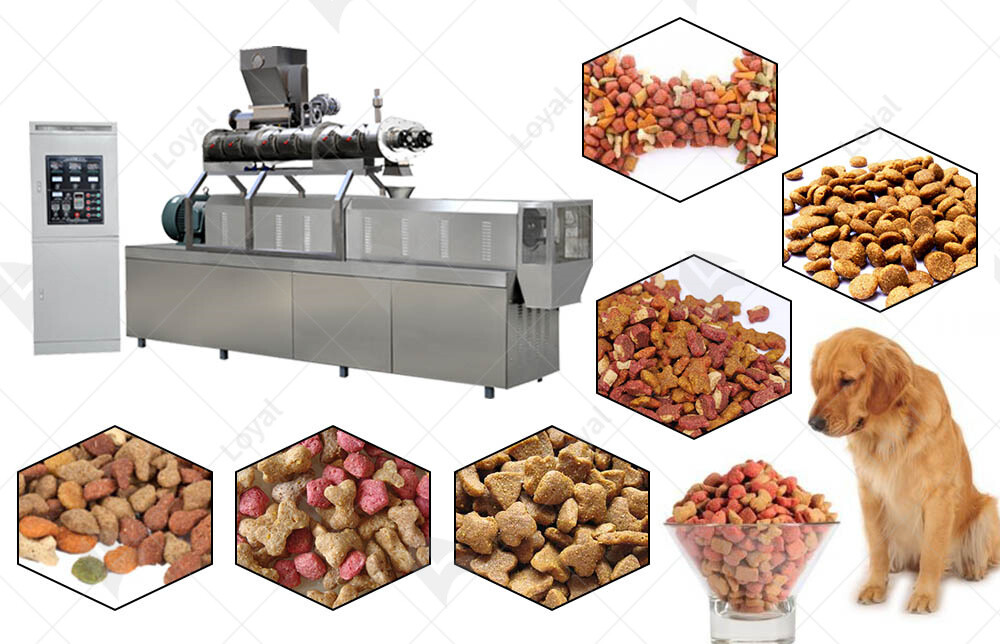
Evolution of Dog Feed Machine Technology
The evolution of dog feed machine technology reflects the continuous advancements made in the pet food industry to meet the evolving needs and preferences of pet owners and their furry friends. Over the years, these machines have undergone significant transformations in terms of design, functionality, and performance, driven by factors such as technological innovation, consumer demand, and regulatory requirements.
Early dog feed machines were relatively simple in design and operation, primarily focusing on basic tasks such as grinding and mixing ingredients to create rudimentary formulations. However, as the pet food market expanded and diversified, so too did the capabilities of these machines. Innovations in engineering and materials science led to the development of more efficient and versatile equipment capable of handling a wider range of ingredients and processing techniques.
One of the most notable advancements in dog feed machine technology has been the integration of automation and computerized control systems. Modern machines are equipped with sensors, actuators, and software programs that enable precise monitoring and adjustment of key parameters such as temperature, moisture levels, and mixing times. This level of automation not only improves the consistency and quality of the final product but also enhances production efficiency and reduces the need for manual intervention.
Another area of innovation in dog feed machine technology is sustainability and eco-friendliness. Manufacturers are increasingly incorporating features such as energy-efficient motors, waste reduction mechanisms, and recyclable materials into their machines to minimize their environmental impact. Additionally, there is growing interest in exploring alternative ingredients and processing methods that are more sustainable and resource-efficient without compromising nutritional integrity.

Key Components of Modern Dog Feed Machines
Modern dog feed machines are sophisticated pieces of equipment designed to efficiently produce high-quality pet food. These machines consist of several key components that work together seamlessly to streamline the manufacturing process. Let's delve into the key components of these advanced systems.
At the heart of every dog feed machine lies the hopper and feeding system. The hopper stores the raw ingredients, which are then fed into the machine through a precise feeding system. This component ensures a steady supply of materials for the production process, minimizing downtime and maximizing efficiency.
Once the raw ingredients enter the machine, they pass through the grinding and mixing chamber. Here, various grinding mechanisms break down the ingredients into smaller, uniform particles. Simultaneously, mixing blades blend the ingredients together to create a homogenous mixture. This crucial step ensures consistent quality and nutritional balance in the final product.
After mixing, the feed mixture enters the extrusion system, where it undergoes high pressure and temperature conditions. This process, known as extrusion, transforms the mixture into a dense, dough-like consistency. Specialized screws within the extruder apply precise pressure and heat, resulting in the formation of shaped pellets or kibbles. This component plays a vital role in shaping the final product's texture and appearance.
Once extruded, the dog feed undergoes drying and cooling to remove excess moisture and stabilize the product. Drying units utilize hot air or infrared radiation to evaporate moisture from the surface of the pellets, while cooling units rapidly lower the temperature to prevent overheating. This stage is critical for extending the shelf life of the product and maintaining its quality during storage and transportation.
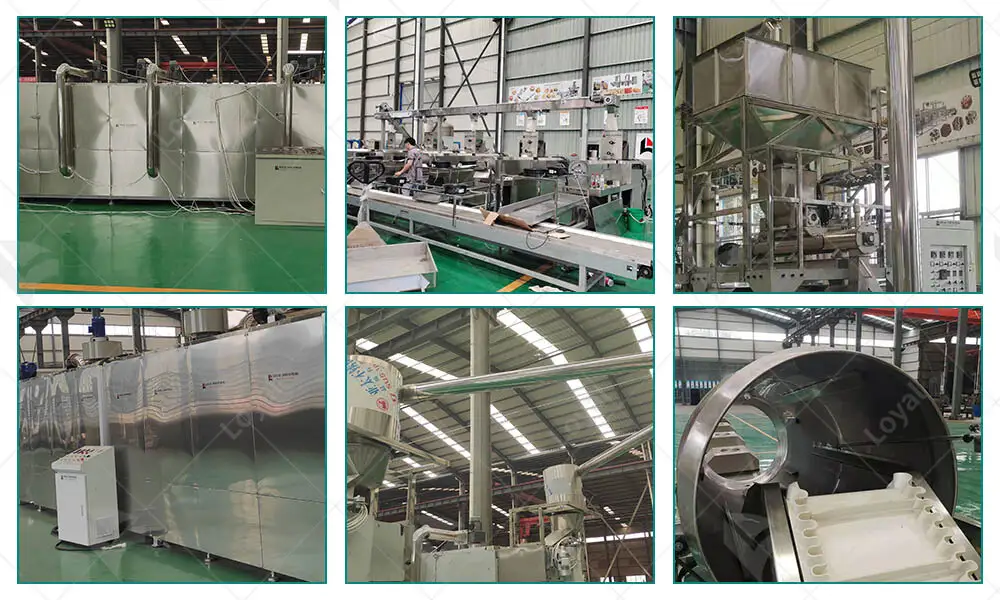
Understanding the Manufacturing Process of Dog Feed
The manufacturing process of dog feed involves a series of carefully orchestrated steps to ensure the production of safe, nutritious, and palatable pet food. Let's explore the various stages of this intricate process.
The manufacturing process begins with the careful selection of ingredients. High-quality grains, proteins, vitamins, and minerals are sourced and inspected for purity and nutritional value. These ingredients are then meticulously measured and prepared according to precise formulations to meet the dietary requirements of dogs.
Once the ingredients are prepared, they are combined in predetermined proportions and fed into the grinding and mixing chamber of the dog feed machine. Here, the ingredients undergo grinding to achieve a uniform particle size, ensuring optimal digestibility and nutrient absorption. Simultaneously, mixing blades blend the ingredients together to create a homogeneous mixture.
The mixed ingredients are then extruded through specialized dies to form the desired shape and size of the dog feed. During extrusion, the mixture is subjected to high pressure and temperature, causing it to expand and take on a dense, dough-like consistency. The extruded product is then cut or shaped into pellets or kibbles using cutting blades or molds.
After extrusion, the dog feed undergoes drying to remove excess moisture and stabilize the product. Drying units utilize hot air or infrared radiation to evaporate moisture from the surface of the pellets, ensuring a crisp texture and extended shelf life. Once dried, the dog feed is carefully packaged in airtight bags or containers to preserve freshness and prevent contamination during storage and transportation.
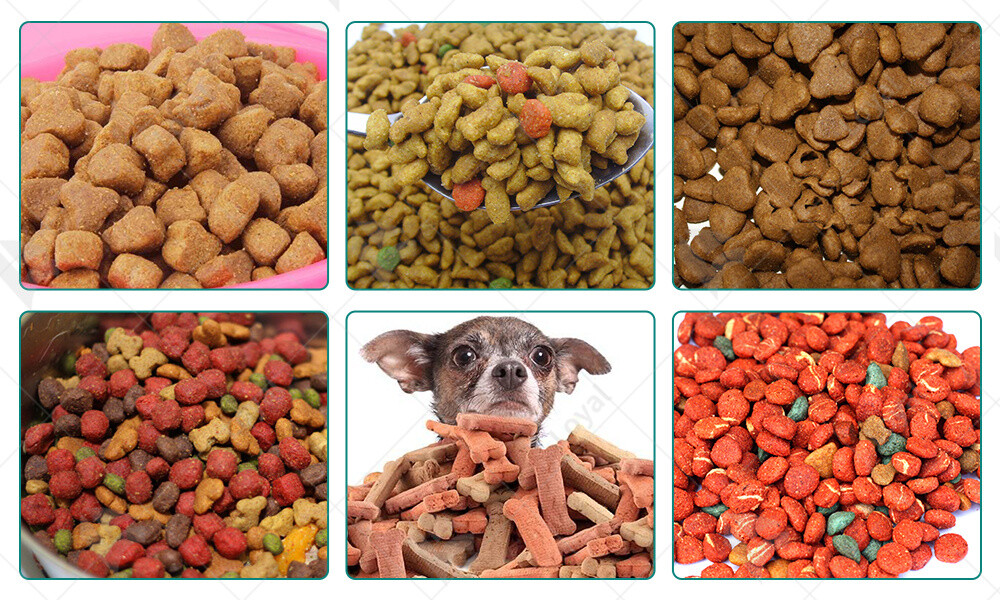
Factors to Consider When Choosing a Dog Feed Machine
When selecting a dog feed machine, several factors come into play, influencing the overall efficiency, productivity, and quality of the end product. Below, we'll compare the machines offered by Loyalty (LOYAL) and NP Company, highlighting key aspects to help you make an informed decision.
Factors | LOYAL Dog Feed Machine | NP Company Dog Feed Machine |
Technology | Incorporates cutting-edge microwave drying technology for efficient processing. | Relies on traditional drying methods. |
Customization Options | Offers extensive customization options to tailor the machine to specific needs. | Limited customization options available. |
Output Capacity | High output capacity, suitable for large-scale operations. | Moderate output capacity, ideal for small to medium-sized businesses. |
Durability | Known for robust construction and long-lasting durability. | Relatively durable but may require more frequent maintenance. |
Price | Typically higher initial investment but offers excellent value over time. | Lower initial cost but may incur higher long-term expenses. |
In summary, the choice between Loyalty's dog feed machine and NP Company's machine depends on individual requirements, budget constraints, and long-term goals. While Loyalty's machine excels in technology and customization, NP Company's offering may appeal to those with budgetary considerations.
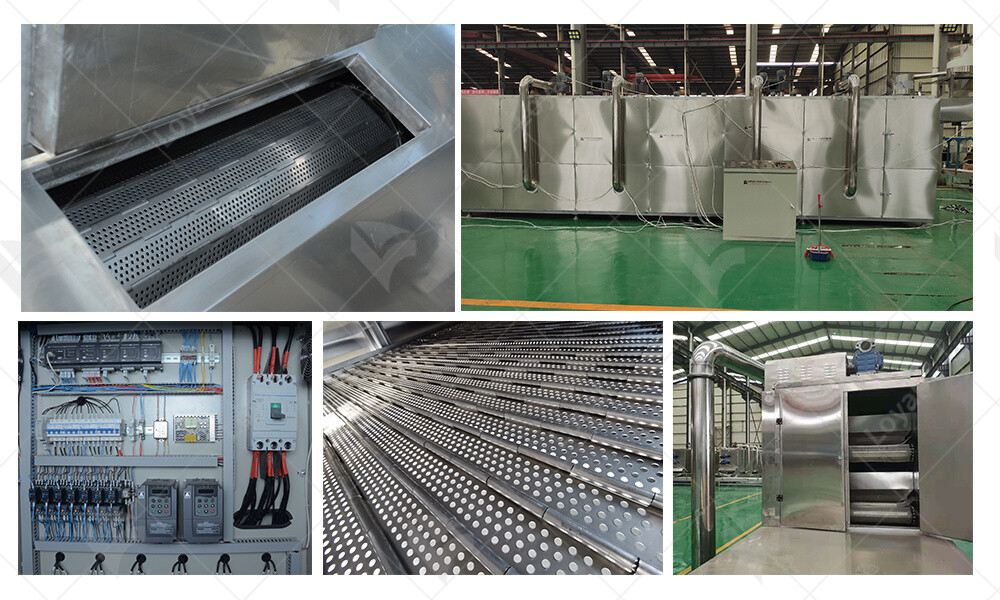
Advantages of Using Automated Dog Feed Machines
1. Enhanced Efficiency: One of the primary advantages of automated dog feed machines is their ability to significantly enhance efficiency in the production process. These machines are equipped with advanced technology that streamlines the manufacturing process, resulting in higher production rates and reduced labor costs. By automating repetitive tasks such as mixing, extruding, and packaging, manufacturers can optimize their operations and meet the growing demand for dog food products.
2. Consistent Quality: Another major advantage of automated dog feed machines is their ability to maintain consistent quality in every batch of pet food produced. These machines are programmed to adhere to precise formulas and specifications, ensuring that each product meets the highest standards of quality and nutrition. By eliminating human error and variability, automated systems help manufacturers deliver reliable and uniform products that pet owners can trust.
3. Improved Safety and Hygiene: Automated dog feed machines are designed with hygiene and safety in mind, minimizing the risk of contamination and ensuring the integrity of the final product. These machines are equipped with features such as stainless steel construction, easy-to-clean surfaces, and integrated sanitation systems, which help prevent the growth of harmful bacteria and pathogens. By maintaining strict hygiene standards throughout the production process, manufacturers can safeguard the health and well-being of both pets and their owners.
4. Cost Savings: In addition to enhancing efficiency and quality, automated dog feed machines can also result in significant cost savings for manufacturers. By streamlining operations, reducing labor costs, and minimizing waste, these machines help companies improve their bottom line and remain competitive in the market. With the ability to produce large volumes of pet food quickly and efficiently, manufacturers can capitalize on economies of scale and achieve higher profit margins.
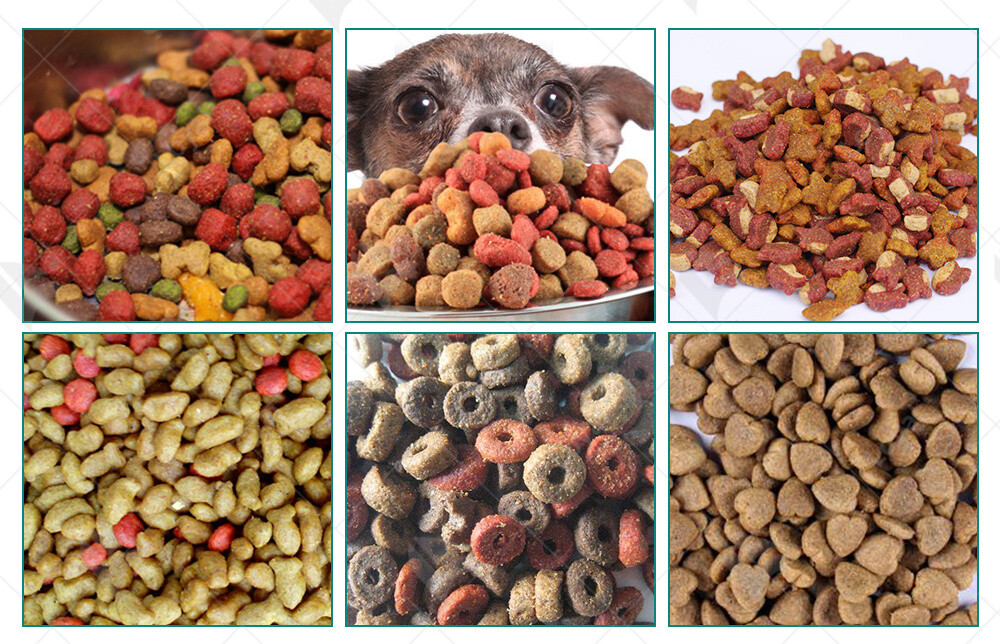
Customization Options in Dog Feed Machine Designs
1. Ingredient Flexibility: One of the primary customization options in dog feed machine designs is the ability to accommodate a wide range of ingredients. Manufacturers can choose from an array of raw materials, including meats, grains, vegetables, and supplements, to create custom formulations tailored to specific dietary requirements and preferences. By offering flexibility in ingredient selection, dog feed machines empower manufacturers to cater to different breeds, ages, and health conditions.
2. Formula Adjustability: Another key customization feature in dog feed machine designs is the ability to adjust formulas and recipes on the fly. With programmable settings and precision control systems, manufacturers can fine-tune parameters such as ingredient proportions, texture, and moisture content to achieve desired outcomes. Whether it's producing kibble, wet food, or specialized diets, customizable dog feed machines give manufacturers the flexibility to adapt to changing market demands and consumer preferences.
3. Packaging Options: Customization extends beyond the formulation process to include packaging options for dog food products. Dog feed machines can be integrated with various packaging solutions, such as bags, pouches, cans, and trays, allowing manufacturers to choose the most suitable packaging format for their target market. Whether it's single-serve portions for convenience or bulk packaging for cost savings, customizable packaging options enhance product appeal and consumer convenience.
4. Brand Identity: In addition to functional customization, dog feed machine designs also offer opportunities for brand differentiation and identity. Manufacturers can customize equipment aesthetics, branding elements, and labeling to reflect their unique brand image and values. From logo placement and color schemes to packaging design and messaging, custom-branded dog feed machines help manufacturers establish a strong presence in the market and build customer loyalty.
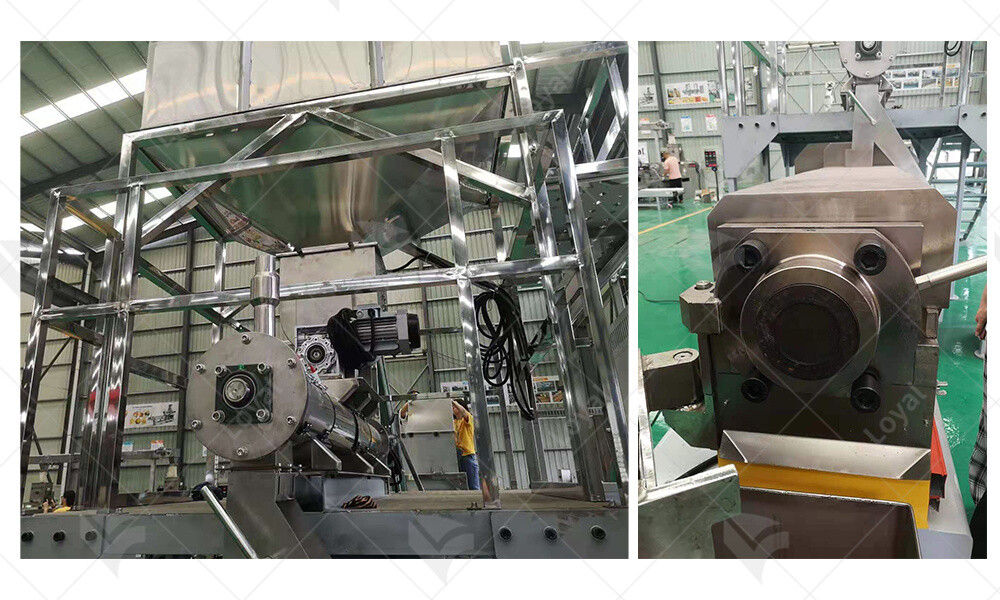
Maintenance and Care Tips for Dog Feed Machines
Proper maintenance and care are essential to ensure the longevity and optimal performance of your dog feed machine. By following these maintenance and care tips diligently, you can maximize the lifespan of your dog feed machine and maintain consistent quality in your feed production process. Remember, a well-maintained machine is not only more reliable but also more cost-effective in the long run.Here are some expert tips to keep your equipment running smoothly:
1. Regular Cleaning: Regularly clean all components of the machine, including conveyor belts, hoppers, and drying chambers, to prevent buildup of debris and contaminants that could affect the quality of the feed.
2. Scheduled Inspections: Implement a schedule for routine inspections to identify any signs of wear and tear, loose parts, or potential issues that may arise. Addressing these issues promptly can prevent costly repairs down the line.
3. Lubrication: Keep moving parts well-lubricated to reduce friction and prevent premature wear. Use lubricants recommended by the manufacturer and follow their guidelines for application frequency.
4. Training and Education: Ensure that operators receive adequate training on the proper use and maintenance of the dog feed machine. Educate them on best practices and safety protocols to minimize the risk of accidents and equipment damage.

Conclusion
With the continuous development of the pet industry, dog feed machine technology has undergone significant advancements. Modern dog feed machines feature various key components enabling efficient production processes. The use of automated dog feed machines offers numerous advantages, including increased production efficiency and quality, as well as reduced labor costs. Furthermore, modern dog feed machine designs offer customization options to meet diverse needs.
When selecting a dog feed machine, factors such as production scale, cost, and technical support should be considered. Additionally, regular maintenance and care of dog feed machines are crucial to ensuring long-term stable operation. Therefore, for pet food manufacturers, choosing suitable dog feed machines tailored to their needs and maintaining them will help improve production efficiency, ensure product quality, and meet market demands.

References
1.Food Processing: https://www.foodprocessing.com/
2.Food Engineering Magazine: https://www.foodengineeringmag.com/
3.Food Manufacturing:https://www.foodmanufacturing.com/
4.Food Dive:https://www.fooddive.com/
5.Food Business News: https://www.foodbusinessnews.net/












